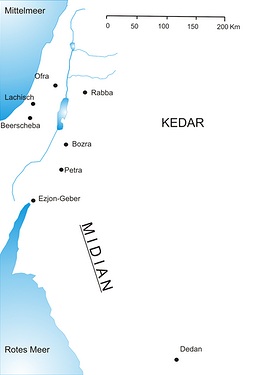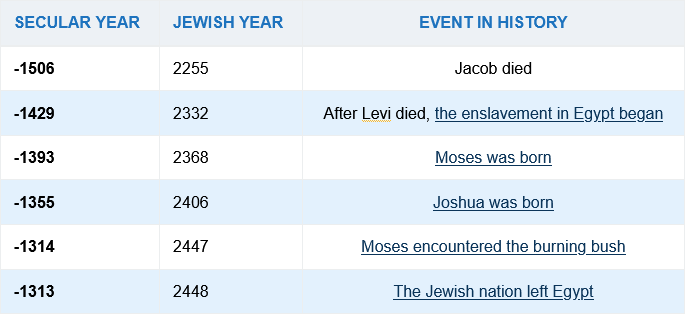And here is my detailed reply to Falk:
Do Egyptian Place Names match with the Biblical Narrative of the Exodus?
An important evidence for the Exodus having taken place from Egypt is that the place names mentioned in the Bible are found in the Egyptian literature. Dr. David A Falk of University of British Columbia has shown these similarities. He has written an excellent paper titled What We Know about the Egyptian Places Mentioned in Exodus. The similarities pointed out by him are as follows:
Biblical Rameses = Egyptian Pirameses
Etham-Succoth = pr-tm ṯkw (Etham = pr-tm, Succoth =tkw)
Pi-Hahiroth = pr-ḥwt-ḥrt
Baˁal Zephon = bˁr-ḏȜpn
Migdol = mˁktir
Yam suf = ṯwfy
I have discussed online with Dr. Falk and am grateful for his guidance. Now I give my assessment of these evidences.
The Beginnings at Rameses (in the land of Mitsrayim)
Dr. Falk identifies Biblical Rameses with the island of Quantir located between two eastern distributaries of the Nile. He points out that Quantir is referred to as Pirameses in the Egyptian texts which is similar to Biblical place name “Rameses.” Pirameses is marked in Picture 1 given by Dr. Falk. This suggestion is credible.
This identification faces the challenge of archaeological evidence. According to Dr. Falk, Quantir was established on virgin ground by Pharaoh Seti I who ruled from 1304 to 1289 BCE. Scholars often locate the Exodus at this time therefore the archaeological evidence matches with the Biblical narrative. However, the Bible also says that Joseph had settled Jacob at Rameses: “He gave them territory in the land of Mitsrayim, in the best region of the land, the land of Rameses…” (Genesis 47:11). Therefore, according to the Bible, Rameses would have been in existence at least a century before the Exodus.
Dr. Falk seeks to explain this absence of archaeological evidence by pointing out that the term “Pharaoh” was coined by the Egyptians only during the reign of Thutmosis III (ca 1479-1425 BCE). The term, he suggests, was inserted retrojectively at the time of Jacob in Gen 47:11. Therefore, he says, it is reasonable to conclude that the term “Rameses” in Gen 47:11 was also inserted retrojectively. Jacob may be settled somewhere else, say, “Y,” but the scribe has referred to Y as Rameses. This explanation, though possible, is less than satisfactory. Firstly, it is equally possible that Rameses was in existence at the time of Jacob and not introduced retrojectively. Secondly, there is a difference in retrojective use of the title name “Pharaoh” and retrojective use of the place name “Rameses.” The scribe did not change the narrative by using the term “Pharaoh” retrojectively. However, the scribe would be change the narrative itself by using the place name “Rameses” located at Quantir in place of the place named “Y” located elsewhere retrojectively. The Bible is an inspired document and we should hesitate to suggest such modifications in the narrative.
To continue with the discussion, let us assume for a moment that Rameses was indeed located at Quantir at the time of the Exodus. Moses asked the Pharaoh to release the Hebrews at Mitsrayim. The Pharaoh, however, refused. Then Moses brought a number of plagues. The Pharaoh finally relented after the 10th plague of death and allowed the Hebrews to leave. Then the Hebrews embarked on the Exodus from Rameses (“The Israelites journeyed from Rameses to Sukkoth…” Exodus 12:37). At this time, the Mitsrites were anxious that the Hebrews to leave as soon as possible: “The Egyptians were urging the people on, in order to send them out of the land quickly…” (Exodus 12:33). Dr. Falk suggests that the Hebrews were located at Avaris (tell el-Dab’a) south of Quantir-Rameses across the Eastern (Pelusiac) Distributary of the Nile. This is plausible. The term “Rameses” could include both Quantir as well as tell el-Dab’a since the two places were located in close vicinity.
The destination of the Hebrews was the Promised Land of Yisrael. Therefore, we must, in the first instance, assume they would have taken the shortest land route from tell el-Dab’a to Yisrael. Ancient maps indeed show that there existed a land route from here to Yisrael passing north of the Ballah Lakes connecting to the Way of Horus along the Mediterranean Coast as shown at Picture 2 (Hoffmeier, James K, “The Exodus and Wilderness Narrative,” in Arnold, Bill T. and Richard S. Hess, Ancient Israel’s History, Baker Academic, Grand Rapids, 2014, Figure 2.1). Dr. Falk, however, says there was “no route north-eastward… that could lead them to Way of Horus” in the Bronze Age. Thus, he suggests that the Hebrews travelled south from tell el-Dab’a to el-Retabah and then moved eastward as shown in Picture 1. It is beyond the scope of this post to determine whether a route existed from tell el-Dab’a to the Way of Horus at that time or not. However, for the present, we suggest that possibility may not be rejected. That route would run along the Pelusiac distributary of the Nile and the archaeological evidence could be engulfed by the shifting course of the river.
Succoth and Etham
Then, the Bible says the Hebrews “journeyed from Sukkoth and camped in Etham, on the edge of the desert” (Exodus 13:20). The Egyptian texts tell of a place named “pr-tm ṯkw.” The first term in this name, “pr-t,” is similar to the Biblical name Pithom as well as Etham. The term “pr-tm” is also connected with the goddess Atum in Egyptian literature. Rameses II built a Temple of Atum at el-Retabah. Thus “pr-tm” is identified, on the one hand, with Biblical Etham; and on the other hand with goddess Atum at el-Retabah.
Dr. Falk then identifies Biblical Sukkoth with the second term “ṯkw” in the same name “pr-tm ṯkw.” Scholars, he says, have accepted that “ṯkw” could refer to Sukkoth. He further identifies Sukkoth with the region of el-Retabah rather than a specific place. These identifications are credible on the similarities of place names. However, as said above, there was no reason for the Hebrews to move south from tell el-Dab’a to el-Retabah. Hence this identification faces the challenge of geography.
The Philistines and the Long Route
After the Hebrews had travelled from Rameses to Sukkoth (Exodus 12:37), the Bible says:
Exodus 13:17: “When Pharaoh released the people, God did not lead them by the way to the land of the Philistines, although that was nearby…
Exodus 13:20: “They journeyed from Sukkoth and camped in Etham, on the edge of the desert.”
Dr. Falk says that the Philistines referred to in 13:17 were on the coastal plain of Canaan. Thus, he interprets the verse as “God did not lead them by Way of Horus to the land of the Philistines, although that was nearby…” This interpretation could be possible. However, it creates another problem. The above directive was given to the Hebrews at Succoth, that is, at el-Retabah. So the Hebrews should have travelled southward as they entered Sinai in order to avoid the shorter Way of Horus to Yisrael. But Dr. Falk suggests they moved northward towards the Way of Horus as we shall discuss shortly.
Six other translations of the Bible namely NIV, NASB, NLT, MSG, BBE and NRSV, translate 13:17 as God did not lead them “through” the land of the Philistines. This would mean that the land of the Philistines was located between Succoth at el-Retabah and Yisrael. But that is not the case here. The Philistines are located within Yisrael though in the coastal area.
Thus, both interpretations of Exodus 13:17 face the challenge of geography. If we interpret the verse as “to the land of Philistines” then the Hebrews should have avoided the shorter northward route. If we interpret the verse as “through the land of Philistines” then the location of the Philistines does not match with the Biblical narrative.
The second challenge arising from above verses is that verse 13:20 says, “They journeyed from Sukkoth and camped in Etham, on the edge of the desert.” However, el-Retabah is located within the Nile Valley though outside the flood zone. It is not located at the “edge of a desert” which lies east of the Lake Timsah as shown in Picture 1.
Pi-Hahiroth, Baˁal Zephon, Migdol and Yam suf
The Hebrews moved on from Etham. At this point, the Bible says:
Exodus 14:2: “Tell the Israelites that they must turn and camp before Pi-hahiroth, between Migdol and Yam Suf; you are to camp by the Yam Suf before Baal Zephon opposite it.”
Four places mentioned in this verse are Pi-hahiroth, Migdol, Yam Suf and Baal Zephon. Dr. Falk has identified these four Biblical places with places mentioned in the Egyptian literature as follows:
Pi-Hahiroth = pr-ḥwt-ḥrt
Migdol = mˁktir
Yam suf = ṯwfy
Baˁal Zephon = bˁr-ḏȜpn
These similarities in the names are credible. Dr. Falk says these Egyptian names are not identified with specific places in the Egyptian literature. Thus, he is justified in physically locating these places on the basis of the Biblical narrative that follows:
Exodus 14:3: Pharaoh will think regarding the Israelites, ‘They are wandering around confused in the land – the desert has closed in on them…’
Exodus 14:5: When it was reported to the king of Egypt that the people had fled, the heart of Pharaoh and his servants was turned against the people …
Exodus 14:9: The Egyptians chased after them, and… [their] army overtook them camping by the Yam Suf, beside Pi-hahiroth, before Baal-Zephon.
The above verses are followed by the narrative of parting of the Yam Suf, the Hebrews crossing Yam Suf on dry land, the Pharaoh’s army following in pursuit and getting drowned. Dr. Falk locates these four places in the vicinity of Lake Ballah or Lake Timsah. He suggests that the Hebrews moved “northward towards Yisrael as a bluff to draw Pharaoh’s forces out.” Their mission was accomplished with the drowning of the Pharaoh’s army. Then they turned back, retraced their steps and moved further south into the Sinai Peninsula along the long route to Yisrael.
The challenge with this scenario is that the Hebrews embarked on the northward journey (Exodus 14:3) before the Pharaoh’s heart was turned against them (Exodus 14:15). The There was no need for them to stage a bluff to draw out the Pharaoh since till this time the Mitsrites were “urging the people on, in order to send them out of the land quickly…” (Exodus 12:33).
Further, description of the place named “pr-ḥwt-ḥrt” in Egyptian literature does not appear to match with the description of Pi-Hahiroth in the Bible. Dr. Falk quotes from Papyrus Anastasis III: “Twigs of the orchards and wreaths of the vine-yards… The Great-of-Victories youths… stand beside their doors. Their hands bowed down with foliage and greenery of pr-ḥwt-ḥrt and flax of the Waters-of-Horus.” The Egyptian place named pr-ḥwt-ḥrt, therefore, had orchards, vine-yards, foliage and greenery. The Hebrew word Pi-Hahiroth, on the other hand, means “a place where sedges grow” (Strong’s 06367). Sedges are hardy grasses that grow in the most inhospitable sites. Therefore, the fertile context of Egyptian pr-ḥwt-ḥrt does not match with the degraded context of Pi-Hahiroth.
Discussion
The similarities pointed out by Dr. Falk between the Egyptian and Biblical place names is both remarkable and credible. The difficulty is that the geography of the places in Egypt does not match with the geography as mentioned in the Bible.
One, the Hebrews moved south from tell el-Dab’a (Biblical Rameses) to tell el-Rabatah (suggested to be Biblical Etham); while the Bible tells of their moving towards Yisrael, which lay on the northeast.
Two, tell el-Rabatah (Biblical Etham) is located within the fertile Nile Valley; while the Bible tells of the place being located on the edge of the desert.
Three, the mention of short route either “to” or “through” the land of Philistines in 13:17 is not explained. If the correct rendering is “to,” then the Hebrews should have taken the long route southward as they entered Sinai, and not moved northward to the short route along Way of Horus. If the correct rendering is “through” the land of Philistines, then the land of Philistines did not lie between el-Retabah (Succoth), where this was said, and Yisrael.
Four, there was no reason for the Hebrews to turn northward east of Lake Timsah to give bluff when the Pharaoh’s heart had not been hardened.
Five, the Egyptian text tells of “pr-ḥwt-ḥrt” being associated with bountiful cultivation; while the Bible indicates it being an inhospitable area.
On the archaeological front, no evidence for the existence of Rameses at Quantir before 1304 BCE is available. This does not match with the Biblical description of this place at the time of Jacob.
In view of above it is an open question whether the observed similarity of place names between Egypt and the Bible are connected? One possibility is that Exodus took place from some other place but the scribes who composed the Septuagint in 3rd century BCE have introduced certain Egyptian place names into the Biblical narrative.



